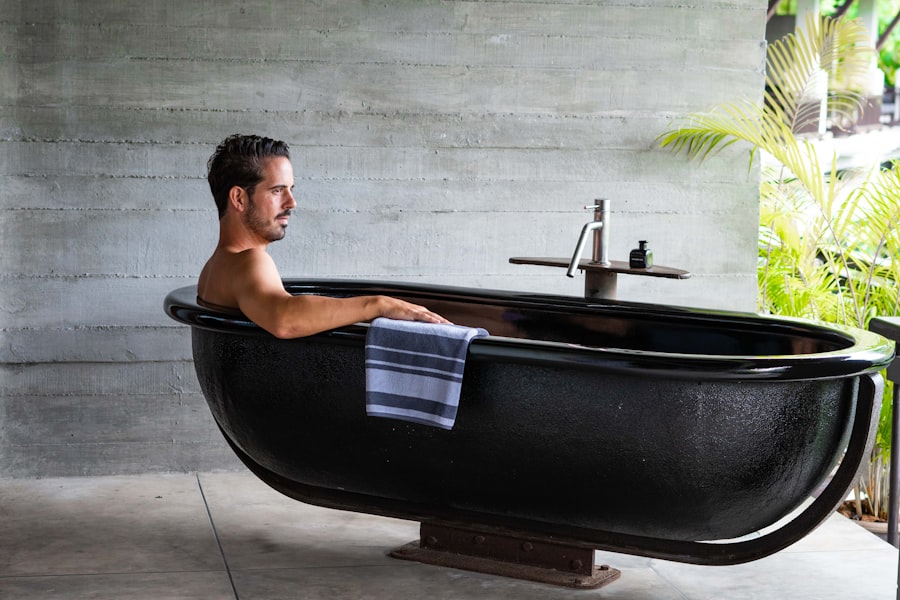When contemplating a bathtub replacement, it is essential to grasp the various factors that can influence the overall cost of the project. The type of bathtub selected is one of the most significant determinants. Bathtubs come in various materials, including acrylic, fiberglass, cast iron, and porcelain, each with its own price point and durability.
For instance, while acrylic tubs are generally more affordable and lightweight, cast iron tubs tend to be more expensive due to their durability and longevity. The choice of material not only affects the initial purchase price but also impacts installation costs, as heavier materials may require additional structural support. Another critical factor is the complexity of the installation process.
If the existing bathtub is being replaced with a similar model, the installation may be straightforward and less costly. However, if the new bathtub is a different size or shape, it may necessitate modifications to plumbing or tiling, which can significantly increase labor costs. Additionally, if the existing plumbing is outdated or requires upgrades to accommodate modern fixtures, this can further escalate expenses.
Understanding these nuances is vital for homeowners to prepare for the financial implications of a bathtub replacement.
Key Takeaways
- Bathtub replacement costs vary based on materials, labor, and additional factors like plumbing changes.
- The average cost of replacing a bathtub typically ranges between ,000 and ,500.
- Extra expenses may include demolition, disposal, permits, and potential repairs to surrounding areas.
- Budgeting should account for unexpected costs and consider professional installation versus DIY options.
- Obtaining multiple quotes helps ensure competitive pricing and better decision-making for the project.
The Average Cost of Bathtub Replacement
The average cost of bathtub replacement can vary widely based on several factors, including location, type of tub, and labor costs. On average, homeowners can expect to pay between $3,000 and $5,000 for a complete bathtub replacement project. This estimate typically includes the cost of the tub itself, labor for installation, and any necessary materials such as plumbing fixtures and tile.
However, this figure can fluctuate significantly depending on regional labor rates and the specific choices made during the project. For example, in metropolitan areas where labor costs are higher, homeowners might find themselves on the upper end of that average or even exceeding it. Conversely, in rural areas where labor is less expensive, costs may be lower.
Additionally, the choice of tub can greatly influence the final price; a high-end soaking tub or a whirlpool model can push costs well beyond the average range. Therefore, it is crucial for homeowners to conduct thorough research and obtain estimates tailored to their specific circumstances.
Additional Costs to Consider for Bathtub Replacement

Beyond the primary expenses associated with purchasing and installing a new bathtub, there are several additional costs that homeowners should consider when budgeting for a replacement project. One significant expense is the cost of removing the old bathtub. Depending on its size and weight, this process can require specialized tools and labor, particularly if the tub is made from heavy materials like cast iron.
Removal costs can range from $200 to $500 or more, depending on local rates and the complexity of the removal process. Another potential expense involves updating or replacing plumbing fixtures. If the existing plumbing is outdated or incompatible with the new tub, homeowners may need to invest in new pipes or fixtures.
This could include faucets, showerheads, and drain assemblies. Additionally, if any tiling or wall finishes need to be repaired or replaced due to damage during removal or installation, this can add further costs to the project. Homeowners should account for these potential expenses when planning their budget to avoid unexpected financial strain.
Factors that Can Impact the Cost of Bathtub Replacement
| Factor | Description | Impact on Cost |
|---|---|---|
| Type of Bathtub | Material and style of the bathtub (e.g., acrylic, cast iron, fiberglass) | High – Different materials vary significantly in price |
| Size and Shape | Dimensions and design complexity of the bathtub | Medium – Larger or custom shapes increase cost |
| Labor Costs | Cost of professional installation and removal of old tub | High – Varies by region and complexity of installation |
| Plumbing Modifications | Changes needed to existing plumbing to fit new tub | Medium to High – Additional plumbing work increases cost |
| Bathroom Layout | Accessibility and space constraints in the bathroom | Medium – Difficult access can increase labor time and cost |
| Additional Features | Extras like jets, whirlpool systems, or built-in seating | High – Adds to both material and installation costs |
| Disposal of Old Tub | Cost to remove and dispose of the existing bathtub | Low to Medium – Depends on local disposal fees |
| Permit and Inspection Fees | Local government requirements for remodeling permits | Low to Medium – Varies by location |
Several factors can impact the cost of bathtub replacement beyond just material choice and installation complexity. One such factor is accessibility; if a bathroom is located in a tight space or on an upper floor without easy access for heavy equipment, labor costs may increase due to the additional time and effort required for installation. In some cases, contractors may need to disassemble parts of walls or ceilings to facilitate access, which can further drive up costs.
Seasonality can also play a role in pricing. During peak renovation seasons—typically spring and summer—contractors may charge higher rates due to increased demand for their services. Conversely, during off-peak seasons, homeowners might find more competitive pricing as contractors seek work during slower months.
Additionally, local building codes and regulations can impact costs; if a homeowner needs to obtain permits or adhere to specific standards during installation, this can add both time and expense to the project.
How to Budget for a Bathtub Replacement Project
Budgeting for a bathtub replacement project requires careful planning and consideration of all potential costs involved. Homeowners should start by determining their overall budget for the project and then break it down into specific categories: tub purchase price, labor costs, removal fees, plumbing updates, and any additional materials needed for installation. It’s advisable to allocate a contingency fund—typically around 10-20% of the total budget—to cover unexpected expenses that may arise during the project.
Researching different types of bathtubs and their associated costs is also crucial in establishing a realistic budget. Homeowners should visit showrooms or browse online retailers to compare prices and features of various models. Additionally, obtaining multiple quotes from contractors can provide insight into labor costs in their area and help identify any discrepancies in pricing.
By taking these steps, homeowners can create a comprehensive budget that reflects their needs while allowing for flexibility in case of unforeseen circumstances.
Tips for Saving Money on Bathtub Replacement

Homeowners looking to save money on bathtub replacement have several strategies at their disposal. One effective approach is to consider purchasing a mid-range tub rather than opting for high-end models that come with premium price tags. Many mid-range options offer excellent quality and aesthetics without breaking the bank.
Additionally, shopping during sales events or clearance periods can yield significant savings on both tubs and fixtures. Another way to cut costs is by opting for a straightforward installation process whenever possible. If replacing an existing tub with a similar model that requires minimal plumbing adjustments, homeowners can save on labor costs associated with more complex installations.
Furthermore, taking on some aspects of the project as a DIY endeavor—such as painting or tiling—can also reduce overall expenses. However, it’s essential to assess one’s skill level honestly; attempting tasks beyond one’s expertise could lead to costly mistakes that negate any initial savings.
Deciding whether to hire a professional or undertake a DIY bathtub replacement involves weighing various cost considerations against potential risks and benefits. Hiring a licensed contractor typically ensures that the job will be completed efficiently and up to code; however, this convenience comes at a price. Labor costs can account for a significant portion of the overall budget—often ranging from $1,000 to $2,500 depending on local rates and project complexity.
On the other hand, opting for a DIY approach can lead to substantial savings on labor costs but requires careful consideration of one’s skills and experience level. While some homeowners may feel confident tackling a bathtub replacement themselves, others may find that they lack the necessary expertise in plumbing or construction techniques. Mistakes made during installation could result in costly repairs down the line or even necessitate hiring a professional to rectify errors.
Therefore, it’s crucial for homeowners to evaluate their capabilities realistically before deciding on a DIY route.
The Importance of Getting Multiple Quotes for Bathtub Replacement
Obtaining multiple quotes from contractors is an essential step in ensuring that homeowners receive fair pricing for their bathtub replacement projects. By soliciting estimates from several professionals, homeowners can gain insight into prevailing market rates in their area and identify any discrepancies in pricing or services offered. This practice not only helps in finding competitive rates but also allows homeowners to assess each contractor’s experience level and customer service approach.
When requesting quotes, it’s beneficial for homeowners to provide detailed information about their project requirements so that contractors can offer accurate estimates tailored to their needs. This includes specifying the type of tub desired, any necessary plumbing updates, and whether additional work—such as tiling or wall repairs—will be required. By comparing these detailed quotes side by side, homeowners can make informed decisions about which contractor best aligns with their budgetary constraints while also ensuring quality workmanship for their bathtub replacement project.




